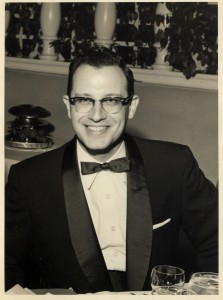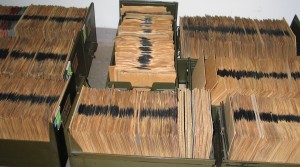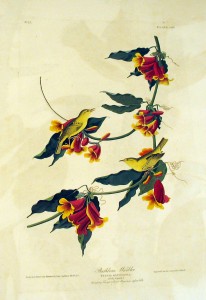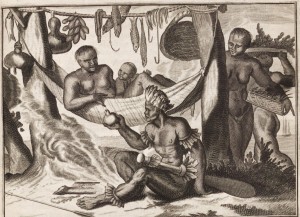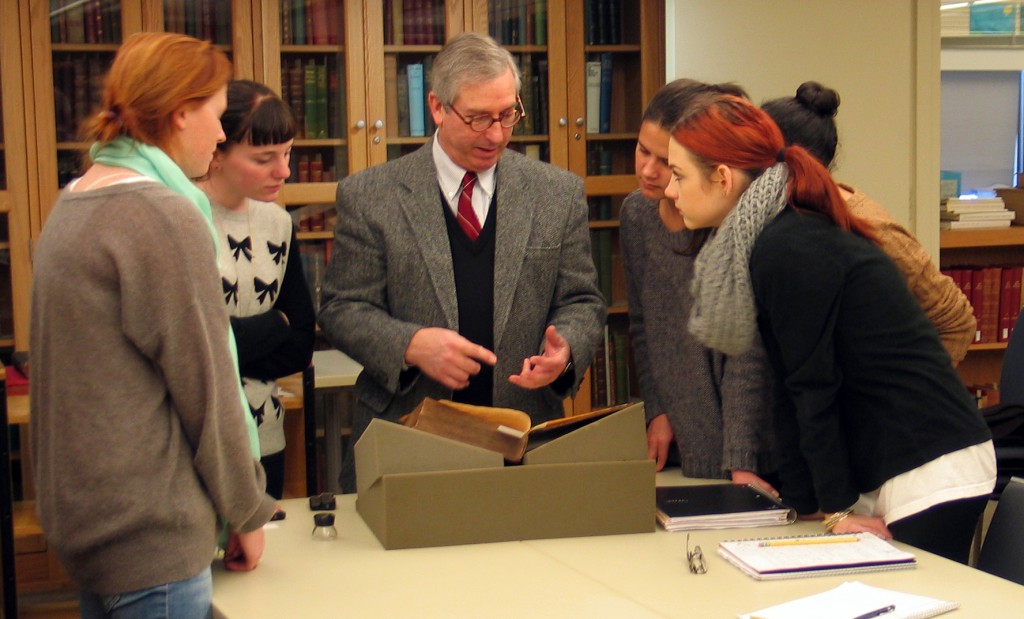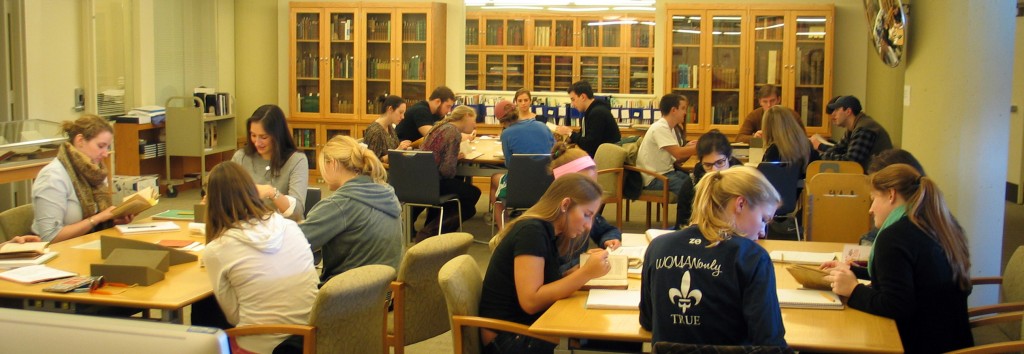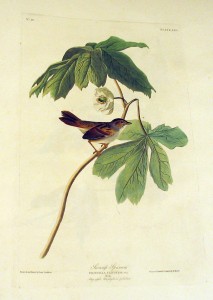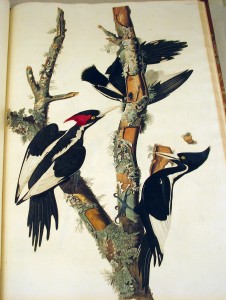 “I have always imagined, that in the plumage of the beautiful Ivory-billed Woodpecker, there is something very closely allied to the style of colouring of the great VANDYKE. The broad extent of its dark glossy body and tail, the large and well-defined white markings of its wings, neck, and bill, relieved by the rich carmine of the pendent crest of the male, and the brilliant yellow of its eye, have never failed to remind me of some of the boldest and noblest productions of that inimitable artist’s pencil. So strongly indeed have these thoughts become ingrafted in my mind, as I gradually obtained a more intimate acquaintance with the Ivory-billed Woodpecker, that whenever I have observed one of these birds flying from one tree to another, I have mentally exclaimed, “There goes a Vandyke!” This notion may seem strange, perhaps ludicrous, to you, good reader, but I relate it as a fact, and whether or not it may be found in accordance with your own ideas, after you have inspected the plate in which is represented this splendid species of the Woodpecker tribe, is perhaps of little consequence.
“I have always imagined, that in the plumage of the beautiful Ivory-billed Woodpecker, there is something very closely allied to the style of colouring of the great VANDYKE. The broad extent of its dark glossy body and tail, the large and well-defined white markings of its wings, neck, and bill, relieved by the rich carmine of the pendent crest of the male, and the brilliant yellow of its eye, have never failed to remind me of some of the boldest and noblest productions of that inimitable artist’s pencil. So strongly indeed have these thoughts become ingrafted in my mind, as I gradually obtained a more intimate acquaintance with the Ivory-billed Woodpecker, that whenever I have observed one of these birds flying from one tree to another, I have mentally exclaimed, “There goes a Vandyke!” This notion may seem strange, perhaps ludicrous, to you, good reader, but I relate it as a fact, and whether or not it may be found in accordance with your own ideas, after you have inspected the plate in which is represented this splendid species of the Woodpecker tribe, is perhaps of little consequence.
… I wish, kind reader, it were in my power to present to your mind’s eye the favourite resort of the Ivory-billed Woodpecker. Would that I could describe the extent of those deep morasses, overshadowed by millions of gigantic dark cypresses, spreading their sturdy moss-covered branches, as if to admonish intruding man to pause and reflect on the many difficulties which he must encounter, should he persist in venturing farther into their almost inaccessible recesses, extending for miles before him, where he should be interrupted by huge projecting branches, here and there the mossy trunk of a fallen and decaying tree, and thousands of creeping and twining plants of numberless species! Would that I could represent to you the dangerous nature of the ground, its oozing, spongy, and miry disposition, although covered with a beautiful but treacherous carpeting, composed of the richest mosses, flags, and water-lilies, no sooner receiving the pressure of the foot than it yields and endangers the very life of the adventurer, whilst here and there, as he approaches an opening, that proves merely a lake of black muddy water, his ear is assailed by the dismal croaking of innumerable frogs, the hissing of serpents, or the bellowing of alligators! Would that I could give you an idea of the sultry pestiferous atmosphere that nearly suffocates the intruder during the meridian heat of our dog days, in those gloomy and horrible swamps! But the attempt to picture these scenes would be vain. Nothing short of ocular demonstration can impress any adequate idea of them.
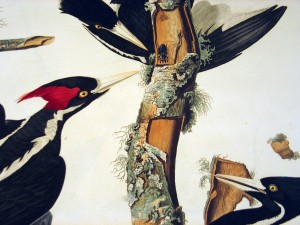 …The Ivory-bill is never seen attacking the corn, or the fruit of the orchards, although it is sometimes observed working upon and chipping off the bark from the belted trees of the newly-cleared plantations. It seldom comes near the ground, but prefers at all times the tops of the tallest trees. Should it, however, discover the half-standing broken shaft of a large dead and rotten tree, it attacks it in such a manner as nearly to demolish it in the course of a few days. I have seen the remains of some of these ancient monarchs of our forests so excavated, and that so singularly, that the tottering fragments of the trunk appeared to be merely supported by the great pile of chips by which its base was surrounded. The strength of this Woodpecker is such, that I have seen it detach pieces of bark seven or eight inches in length at a single blow of its powerful bill, and by beginning at the top branch of a dead tree, tear off the bark, to an extent of twenty or thirty feet, in the course of a few hours, leaping downwards with its body in an upward position, tossing its head to the right and left, or leaning it against the bark to ascertain the precise spot where the grubs were concealed, and immediately after renewing its blows with fresh vigour, all the while sounding its loud notes, as if highly delighted.”
…The Ivory-bill is never seen attacking the corn, or the fruit of the orchards, although it is sometimes observed working upon and chipping off the bark from the belted trees of the newly-cleared plantations. It seldom comes near the ground, but prefers at all times the tops of the tallest trees. Should it, however, discover the half-standing broken shaft of a large dead and rotten tree, it attacks it in such a manner as nearly to demolish it in the course of a few days. I have seen the remains of some of these ancient monarchs of our forests so excavated, and that so singularly, that the tottering fragments of the trunk appeared to be merely supported by the great pile of chips by which its base was surrounded. The strength of this Woodpecker is such, that I have seen it detach pieces of bark seven or eight inches in length at a single blow of its powerful bill, and by beginning at the top branch of a dead tree, tear off the bark, to an extent of twenty or thirty feet, in the course of a few hours, leaping downwards with its body in an upward position, tossing its head to the right and left, or leaning it against the bark to ascertain the precise spot where the grubs were concealed, and immediately after renewing its blows with fresh vigour, all the while sounding its loud notes, as if highly delighted.”
–J. J. Audubon, Ornithological Biography, I (1831), 341-343 [excerpted].
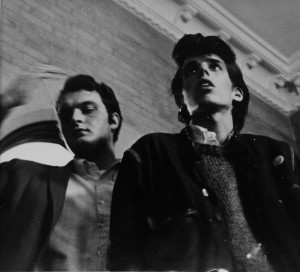 From another institution, we recently received the gift of a box of the papers of Trinity alumnus Steven H. Keeney ’71 (on the right in the photo), relating to the Students for a Democratic Society (SDS) and their activities at Trinity College between 1967-1969. These activities are documented in primary source materials such as letters and memos, newspaper clippings, and “ditto” copies of documents such as Student Senate minutes, budgets, organizational structures, and flyers created by the SDS to publicize their activities. Of these activities, the April 1968 sit-in was probably one of the most noteworthy of the SDS nation-wide movement. There are also indications that the uprising at Columbia just a short time later was spurred by the SDS, who urged students to become active during their 10-day “Shake-up” in 1968.
From another institution, we recently received the gift of a box of the papers of Trinity alumnus Steven H. Keeney ’71 (on the right in the photo), relating to the Students for a Democratic Society (SDS) and their activities at Trinity College between 1967-1969. These activities are documented in primary source materials such as letters and memos, newspaper clippings, and “ditto” copies of documents such as Student Senate minutes, budgets, organizational structures, and flyers created by the SDS to publicize their activities. Of these activities, the April 1968 sit-in was probably one of the most noteworthy of the SDS nation-wide movement. There are also indications that the uprising at Columbia just a short time later was spurred by the SDS, who urged students to become active during their 10-day “Shake-up” in 1968.


